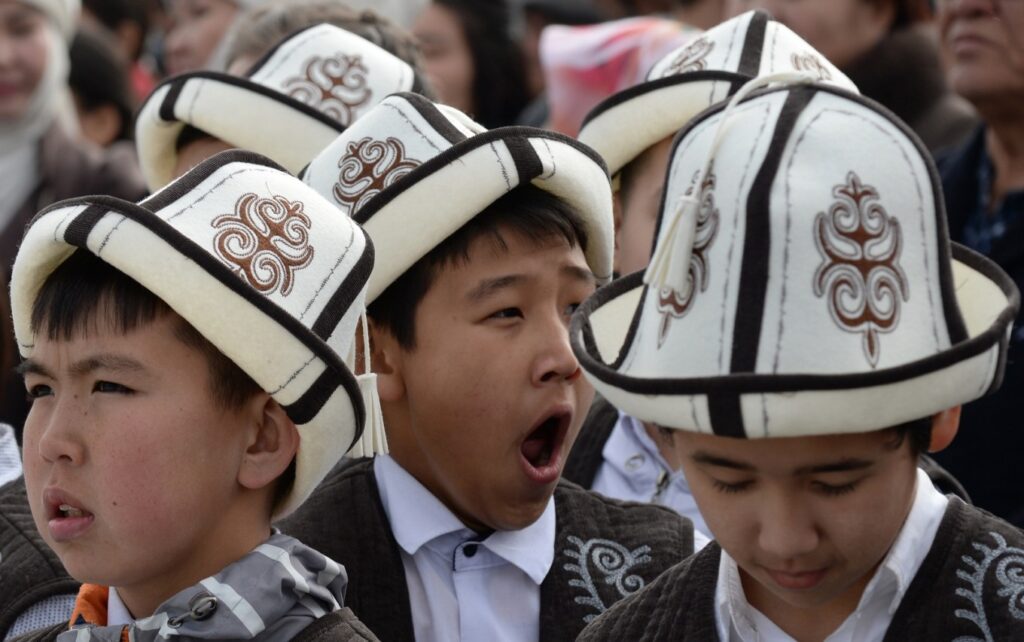Kyrgyz have always treated headwear with special respect. Disrespecting someone’s headwear was equated to humiliation of its owner. Number of rules regarding headwear exist to this day: one can not sell his headwear or pass it to someone else; you shouldn’t play with it or put it on the ground; when taking off, both hands should be used. In the house, headwear is usually kept in a place of honour. Traditional headwear kalpak and elechek reflect the national identity and have special status.
Kalpak, or ak kalpak, is a male headwear made of felt. Ak kalpak is worn at work, for a wedding, during a visit, etc. It is presented as an honourable gift. The tradition of presenting kalpak is nowadays part of state etiquette. Since 2011, Ak kalpak Day is officially celebrated in Kyrgyzstan. On this day, 5th of March, all male government officials wear kalpak to work.
Felt for kalpak is made from white fine wool of the best quality. Kalpak is sewn from four felt wedges that widen downwards. Sometimes wedges on the sides are not sewn completely, which allows you to raise or lower the fields. Kalpak protects from rain and cold as well as from the heat.
Kalpak hats can have low or high crown, completely white or with edges usually from black velvet. Edges and crown of the kalpak are decorated with embroidery. The pattern embroidered on kalpak contains wishes and is a talisman at the same time. Kalpaks are often decorated with family sign (tamga), symbols and signs reflecting the pre-Islamic, Tengarian beliefs of Kyrgyz people. Patterns are embroidered with silk threads and the top is decorated with a tassel.
Elechek, the headdress of a married woman, consists of a thin cotton white fabric (muslin or coarse calico), wrapped around the head. Other names for elechek are: ileki (in the north) and kelek (in the southern regions). Type of elechek and/or its ornaments could determine the age of a woman, her social status and tribal affiliation. Thus, according to the type of the headdress, people distinguished “elechek of the elder wife”, “elechek of the daughter-in-law”, “the second wife’s elechek”, “the widow’s elechek” etc. Sometimes they could be differentiated by form of tribal signs and were called “Bugu elechek”, “Solto elechek” in accordance with the names of tribes. According to the legend, the elechek headdress, length of which varied from 7 to 15 meters, was used by women in various emergency situations of nomadic life: during childbirth – to swaddle the baby, and at death as a grave clothes.
In the north, women wore white chach kap cap under the elechek. Outer part of elechek was fastened with a wide ribbon (kyrgak) from expensive silk fabrics and was decorated with embroidery and beads. Kyrgak from silver plates with insets of precious and semiprecious stones was worn by women of high rank and in special occasions. In the south, under the kelechek women wore kep takiya cap, which had earflaps and a wedge, richly embroidered and decorated with silver, corals and mother of pearl. Elechek was wrapped with narrow woven strips of fabric and covered with embroidered kerchief (duruya).
At present elechek is worn, mainly during national holidays. Masters of elechek and ak kalpak: Ishenbubu Alamanova, Burul Abdraeva, Clara Asangulova and Asel Kalkanova.


